On to Mae Hong Son
The Wednesday Market
There is a network of weekly markets throughout the villages and towns of Thailand that is serviced by peddlers, often entire families, who travel a circuit, selling a particular product. It might be shoes or hats, or handmade baskets, or a particular foodstuff; goods aimed at the local population’s needs. Wednesday, January 29 was Pai’s turn, and although we were scheduled to head out to Mae Hong Son that morning, we made a little stop first at this market, as Mary and I find them fascinating. To us they are a candid self-portrait of a town, of a culture.
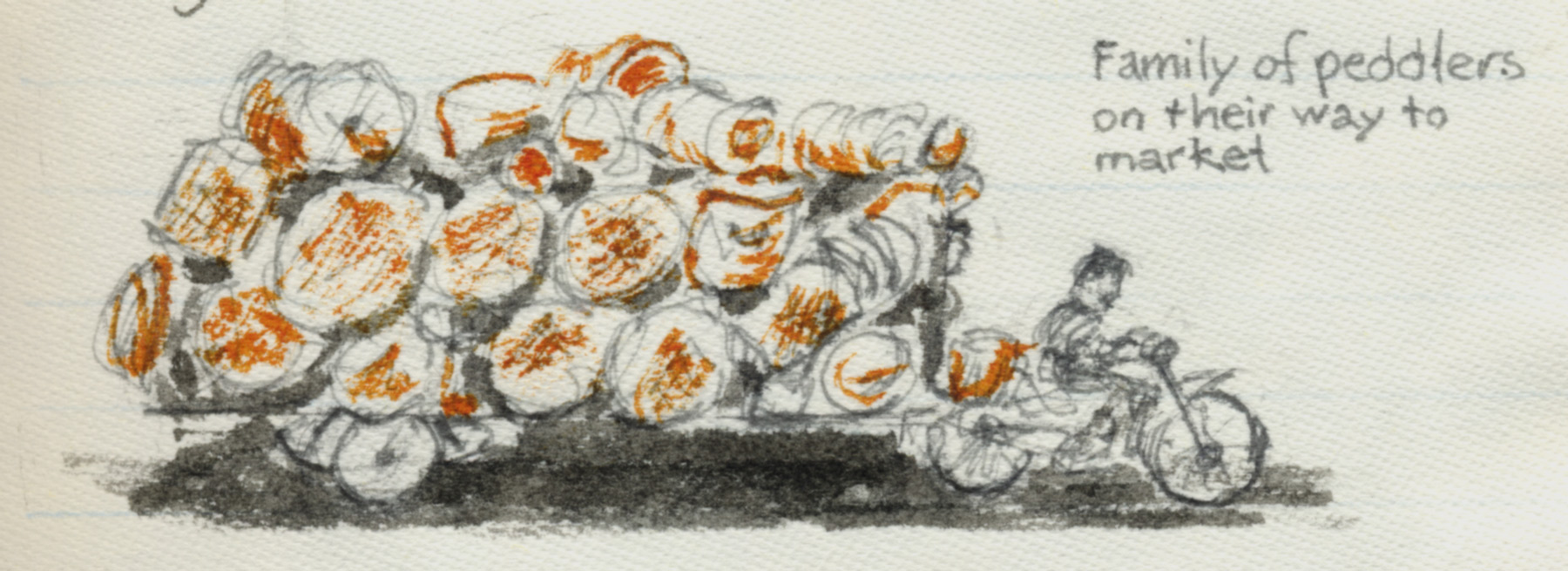
On our way to Mae Hong Son we made another stop to Ban Jabo. This time a local woman met us to show us the sights. Our first destination was a local cave, which also contains a coffin. The path led through the town’s fields—and more breathtaking scenery.
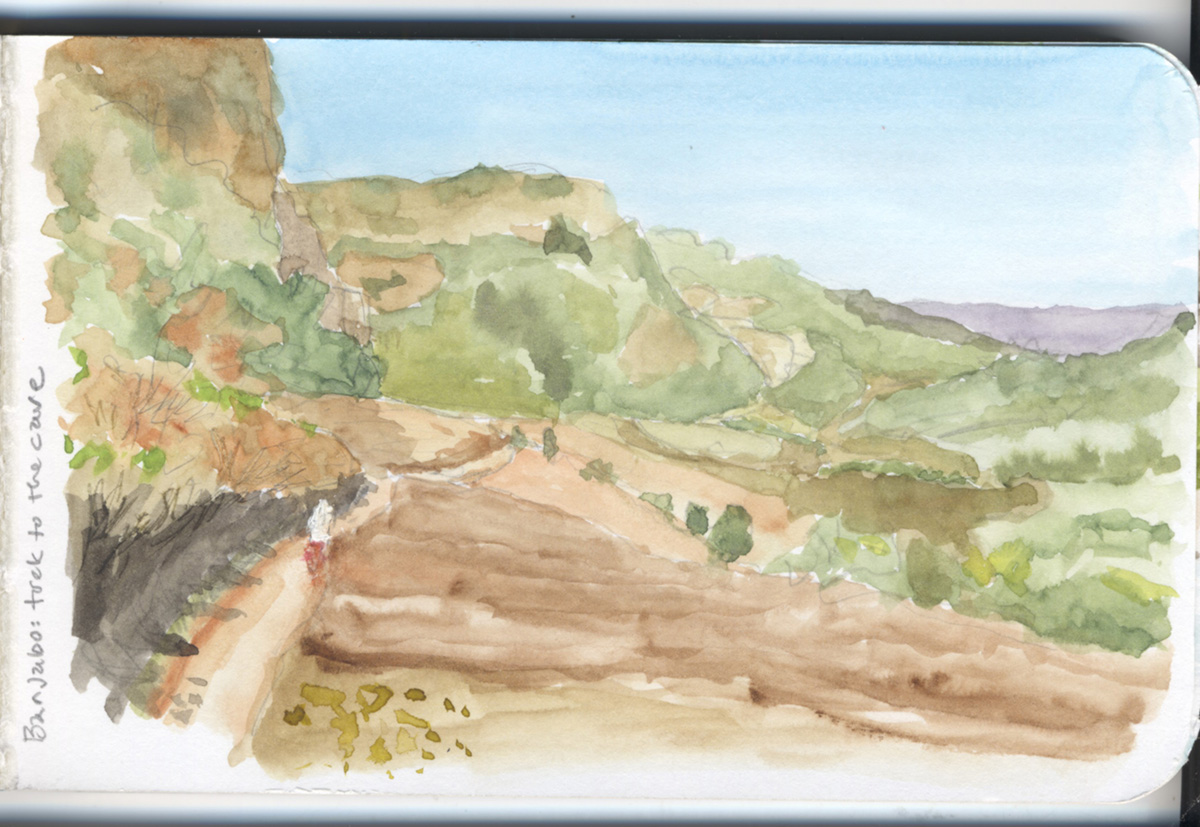
The path then turned into the forest at the base of a cliff. Here stood a curious structure made of plaited bamboo and various sticks. Our guide folded her hands and kowtowed to it. It is an altar, she told us, and there are annual rites performed at the site. I asked about the bottle of Fanta. She said the local spirits prefer the green kind.
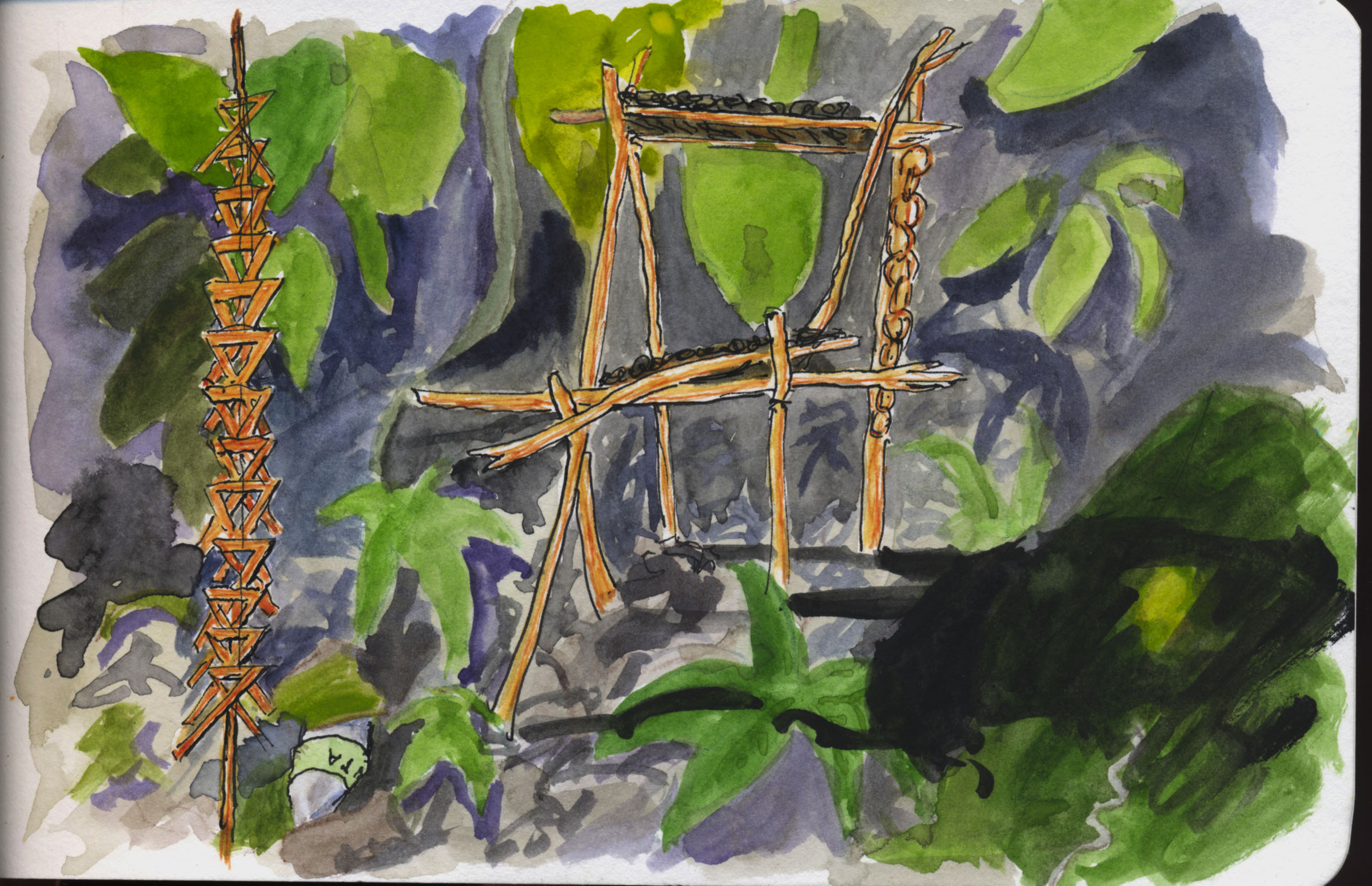
A ways up the path, at the very face of the cliff was a scaffold leading high up the cliff to the cave entrance itself. Mary went with her up the steps; I stayed behind to make this sketch:
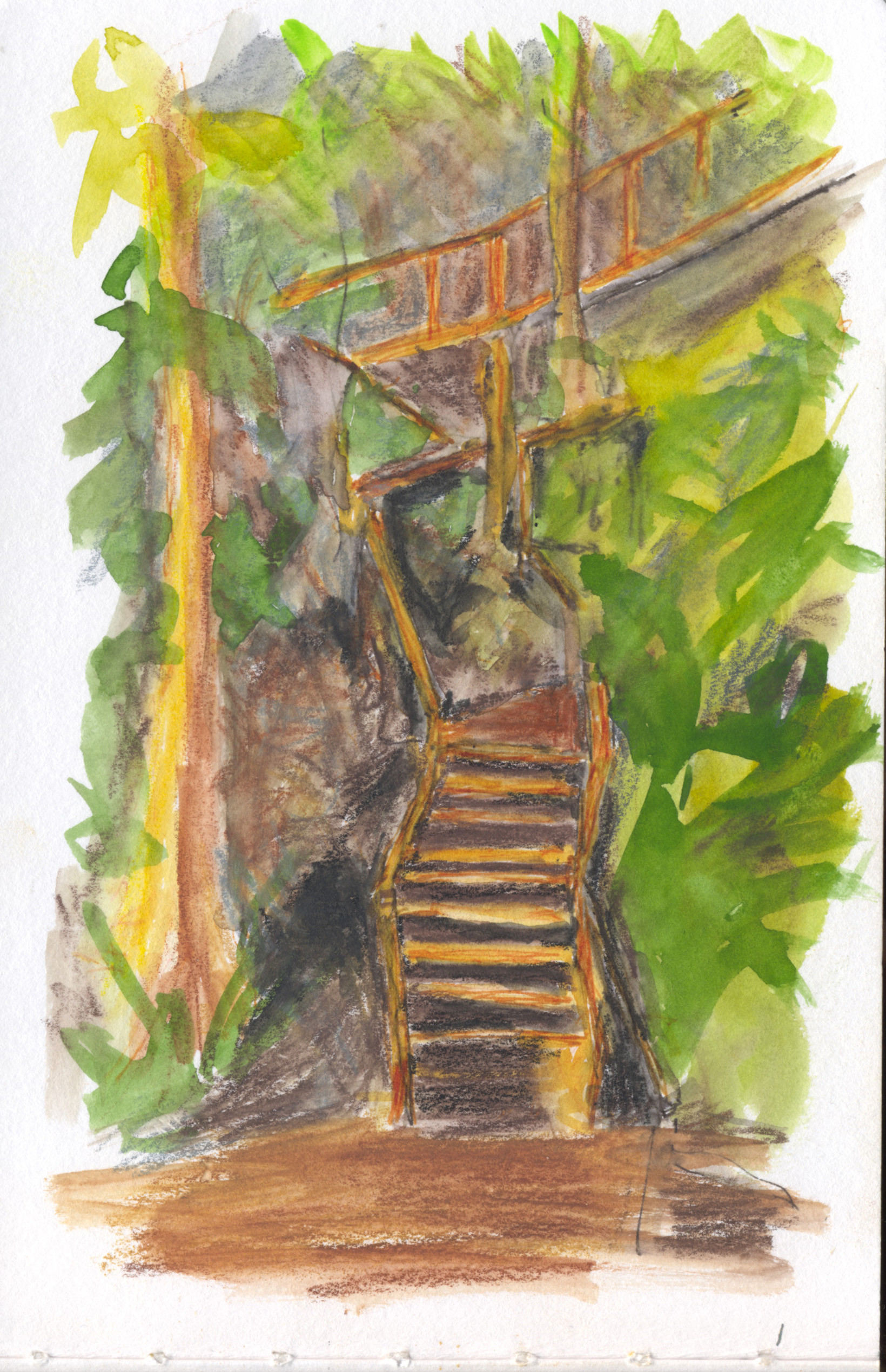
My head still hurt from the previous cave encounter.
Back in town we were treated at her home to a tasty lunch, a lesson in bamboo weaving, and a demonstration of the tribe’s musical instruments, reed instruments with multiple pipes, resembling the qeej, or lushen, of the Hmong people of China. The gentleman who gave the weaving lesson played these instruments (which I was not able to get the name of, just “our musical instruments”) was really quite a good musician. They are played by blowing through the gourd that sticks out of the base, and covering the finger holes at the bottom of the pipes. Their music is meant to be danced to at village events, and he played an infectious tune in a rhythmic, almost percussive manner. Quite enjoyable.
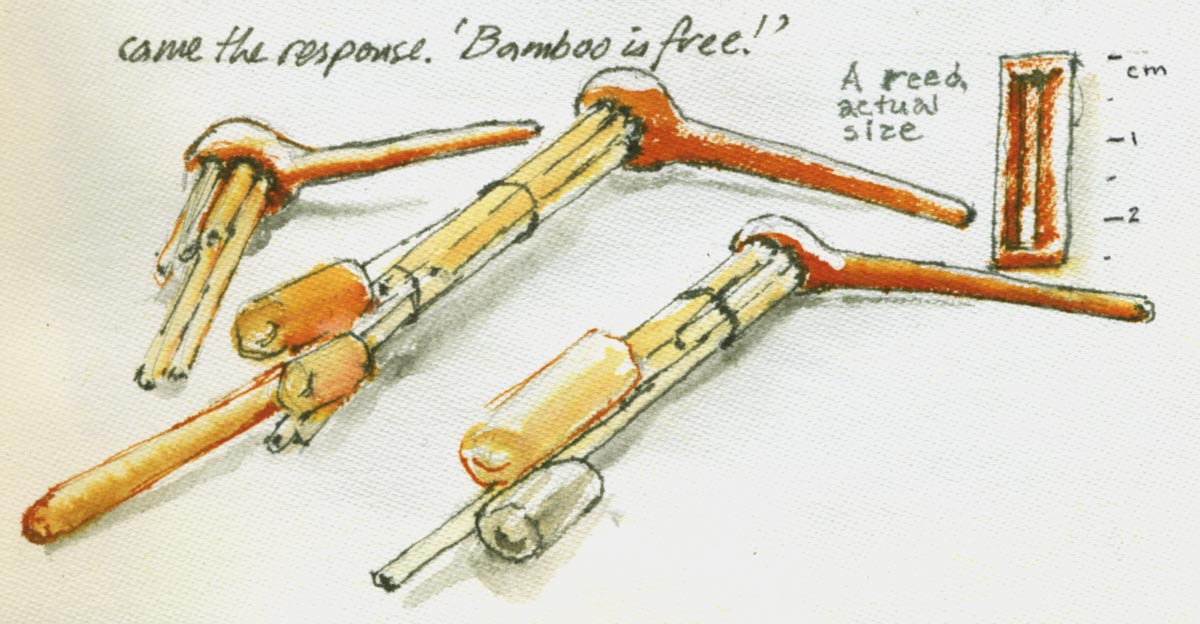
On a related note (no pun intended), our guide had asked one of the elders of Ban Jabo why their houses were made of bamboo. Was it some kind of special tradition? “Not at all,” came the response. “Bamboo is free!”
The Fern Resort
In Mae Hong Son we stayed at The Fern Resort, which boasts of its famous visitors, e.g., Angelina Jolie and family. Picturesque, with villas nestled in the forest around rice fields and gardens. The grounds are decorated with antiques, for example a foot-powered rice grinder like one we saw being used in Myanmar.

We spent the next day at the resort, which I enjoyed, walking around, making sketches and little watercolors.
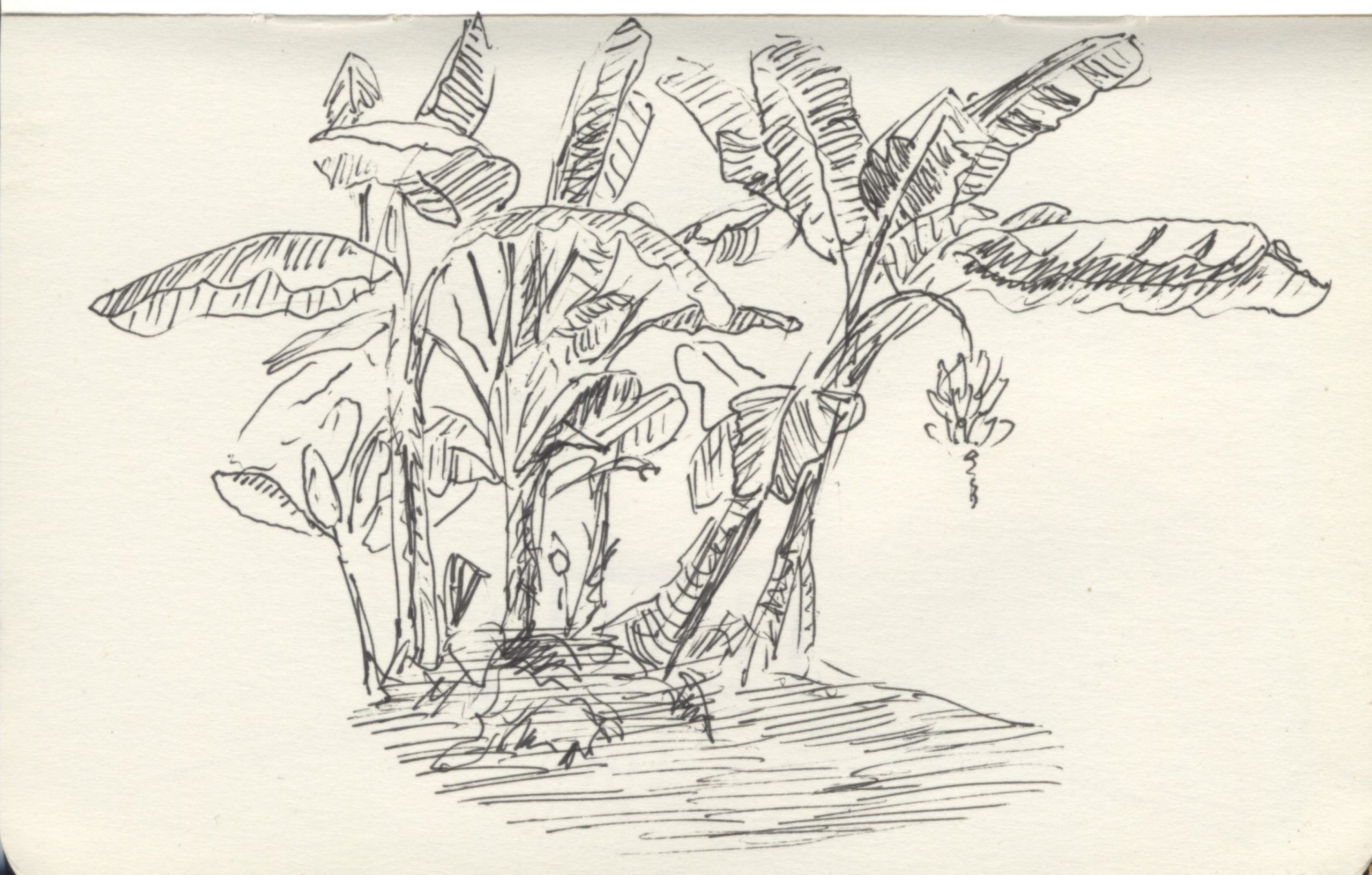
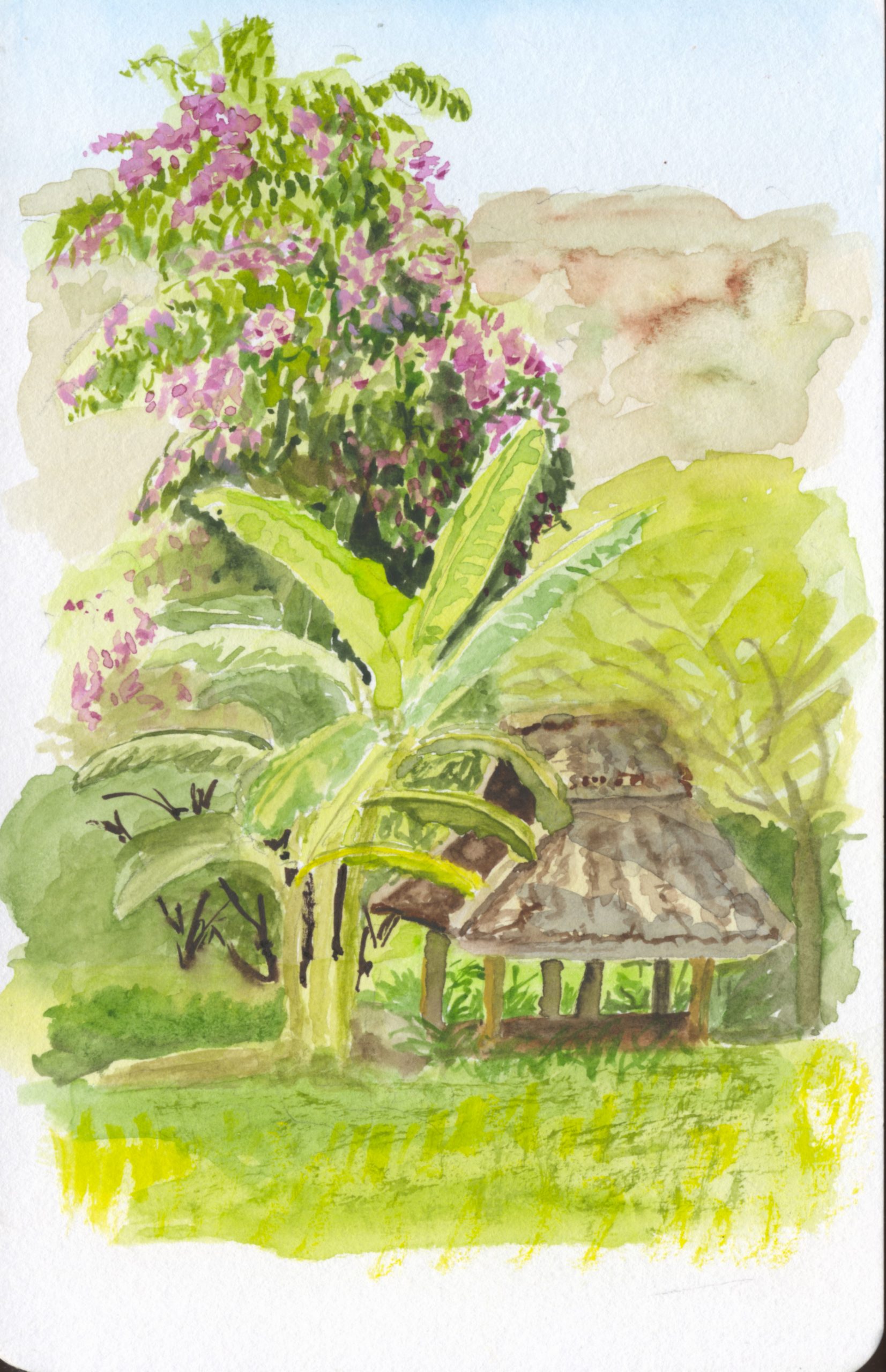
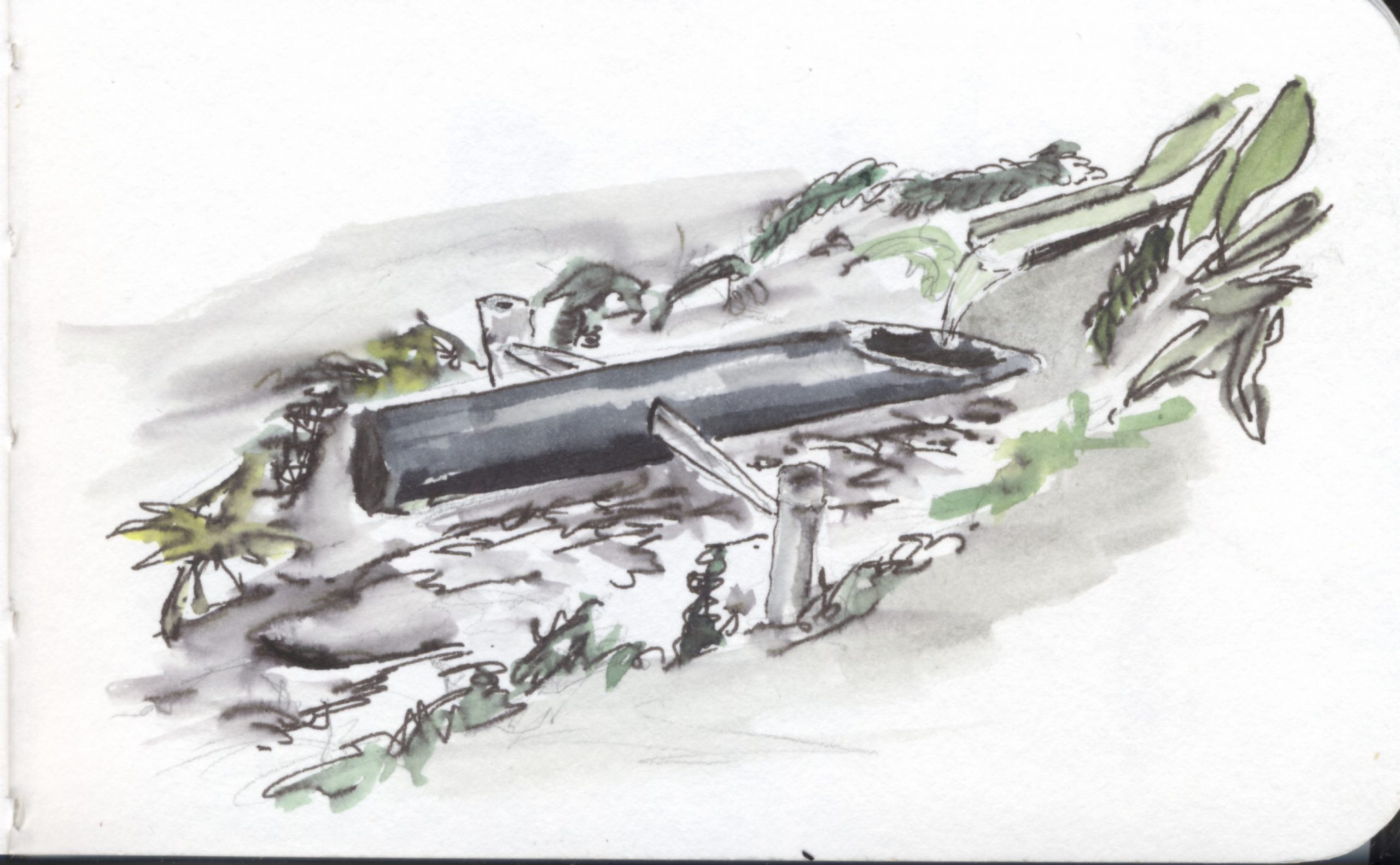
This last one was a decoration that I call a “klop klop” for the sound it makes as it tilts over from being filled with water from the irrigation ditch, and then again tilts back. Scattered around the grounds, they drove Mary to distraction. I actually disabled the one closest to our villa to give us some peace.
The Long-Neck Karen Village
On Friday we took a trip Mary was looking forward to, the Karen Village. To get there we needed to go by boat along the Pai river.
On the way we stopped at a small farming village. In a way, there was not much to see there, but it was interesting nonetheless. We were put off the boat at a point on the river that looked to my eyes like any other. After climbing the riverbank we found ourselves at the edge of a pumpkin (I’m guessing) patch. Unlike a similar patch back home, there was no bare earth between the plants; it was hard to know where to step. Other gardens, casual-looking affairs, were in similar shape.
I’m certainly no expert, but the sense I got from looking around was that here was this was a place of abundance. Compared to back home, a farmer did not have to work nearly as hard to get the land to produce a crop. Here farming could be done without “messing with Mother Nature.” Wonderful.
Not far off there were buildings. A woman sat under an awning, cutting strips of bamboo; two little children were wandering through the village. Mary gave them a couple of balloons, which was fun. There were no men around; they were off working jobs for pay.
By contrast, the Long Neck village is obviously geared toward tourists, and to selling things. There are signs announcing the village, and a broad, even place to pull up a boat. The town itself has a central street leading straight to the river. Both sides of the street are lined with stalls selling handicrafts, and with the porches of houses where women with bronze neck coils are sitting at hand looms, weaving decorative fabrics: scarves, table runners, and so on.
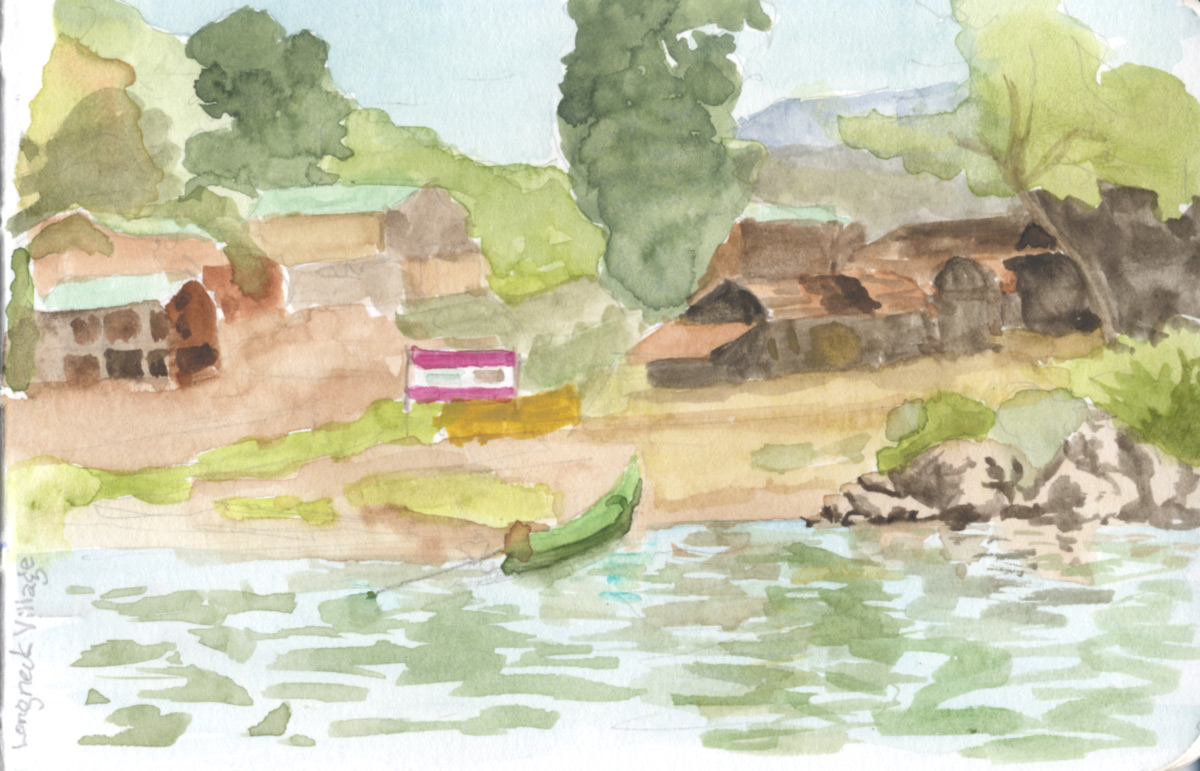
A westerner might feel sorry for these women, but talking with one woman in particular dispelled that notion. Not all of the women in the town were wearing the coils; only about two of every five opt for this decoration. They don’t feel persecuted, but rather proud. The name “Long-Neck” seems weird to me, creepy. But it is simply to distinguish this group of Karen people from others, like the Karen woman we met with bronze coils around her lower legs. And wearing the neck coils does not elongate the neck, but it does push the clavicles down, giving that impression.
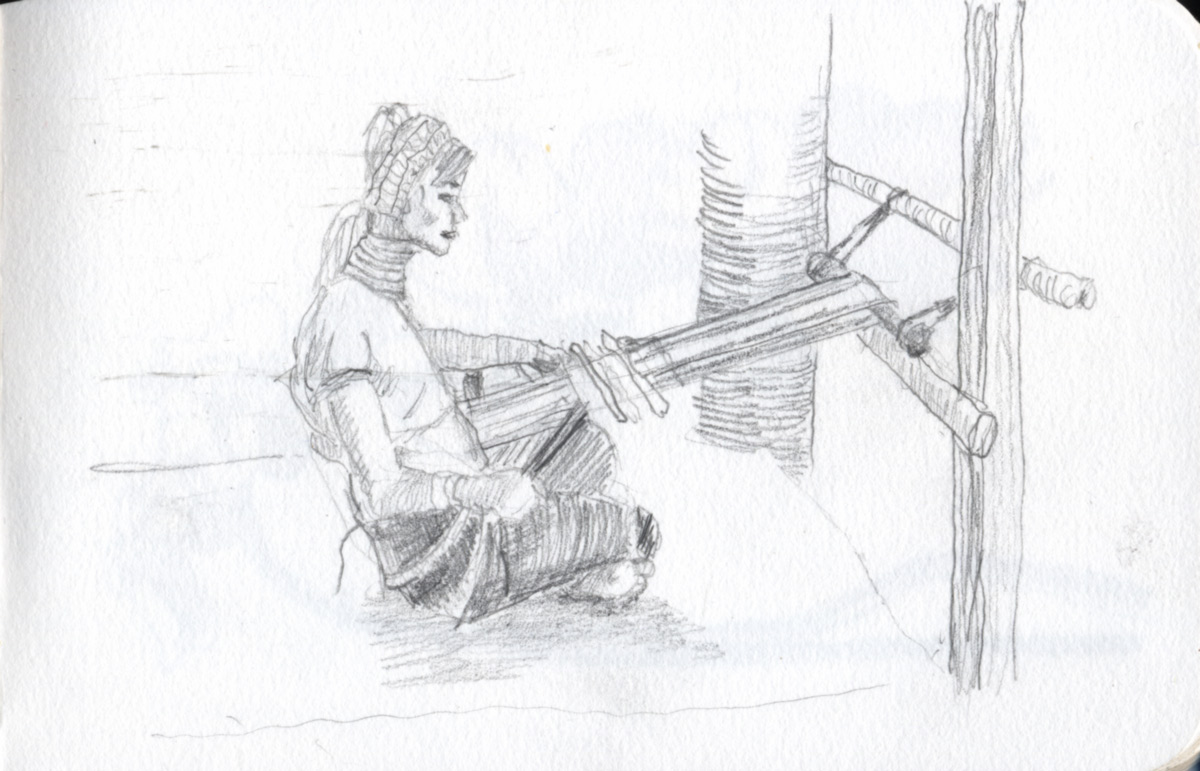
Next: Laos
